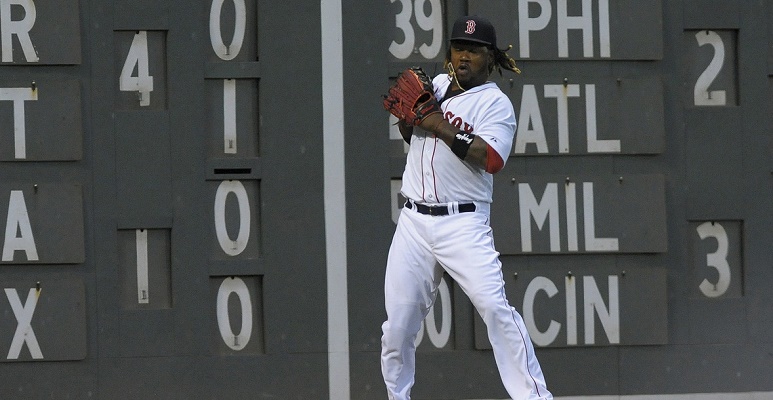For the second straight season, the Red Sox will spend much of the second half dreaming and preparing for next year. This is pretty much uncharted territory for the team and its fans, and in many ways, Boston’s 2015 struggles come with far less hope and reason for optimism than they did a year ago.
The 2014 club was a disappointment, to be sure. But last season, one could find plenty of explanations for the Red Sox’s last-place finish. From a roster that was simply too young to compete to an offense that was unsustainably poor with runners in scoring position, 2014 looked to be more of a blip on the radar than any reason for long-term concern. When Ben Cherington handed out large contracts to Rusney Castillo, Hanley Ramirez and Pablo Sandoval, those struggles looked likely to become a thing of the past.
Yet the 2015 club has been arguably worse, and with a veteran-laden roster, Boston’s descent into last place has come despite a team-record payroll.
The Red Sox went all in this season, and they failed spectacularly, from the front office all the way down to the field. The team has no choice but to pick up the pieces and use August and September as a way to help build a more balanced roster for 2016. They can start by addressing deficiencies in left field, behind the plate and on the mound.
The Red Sox went all in this season, and they failed spectacularly, from the front office all the way down to the field.
Blaming Boston’s poor performance entirely on Hanley Ramirez would be unfair, but in many ways, the 31-year-old’s season exemplifies the roster’s failings. Ramirez isn’t an outfielder, and he’s been exposed far too often out in left field. That a player on pace for 35 home runs currently has -0.1 WARP says all you need to know about Ramirez’s defense.
The Red Sox need to move on from the Hanley outfield experiment and see if he has any hope of sticking at first base. This would enable Boston to use a major league quality outfield and give Jackie Bradley the playing time he requires.
With an .874 OPS in Triple-A this season, Bradley has nothing left to learn down in the minors. The Red Sox need to know if the outfielder can hit MLB pitching, if only for the purpose of building Bradley’s value for a potential trade this offseason. The same can be said about Rusney Castillo, who simply hasn’t played enough for the club to know what it has in the Cuban native.
It’s likely little coincidence that Boston’s strong stretch of play heading into the All-Star Break came at the same time the team used three legitimate outfielders and played Hanley elsewhere. An outfield of Betts, Bradley and Castillo looks strong defensively on paper, and for the sake of better roster balance, the Red Sox should give that trio a chance with an eye toward 2016.
Given this necessary focus on the future, Blake Swihart should be given every opportunity to take his lumps in the big leagues during the second half. The youngster has certainly struggled in his first experience against MLB pitching, with a .237/.280/.319 line over 144 plate appearances. Yet that should be expected from a 23-year-old catcher who played fewer than 40 games in Triple-A before arriving in Boston.
There are already signs, moreover, that Swihart is improving at the plate. After a woeful month of May, he hit .303/.343/.394 in the two weeks leading up to his injury. Swihart isn’t going to turn into an All-Star overnight, but these signs of progress mean the Red Sox should give the catcher as much playing time as possible to better prepare him for 2016 when they hope to compete again.
However, Boston’s biggest issue remains a rotation devoid of MLB-quality starters. The Red Sox’s pitching staff ranks 28th in baseball with a 4.50 ERA, and while some of that can be blamed on the club’s poor defense, the pitching has to improve. Eduardo Rodriguez and Brian Johnson have already appeared in the majors, and there are indications that Henry Owens won’t be far behind them. All three should be given plenty of starts to demonstrate just what they can do at the major league level.
If you think this sounds similar to last season, when the Red Sox gave the likes of Rubby De La Rosa, Allen Webster and Anthony Ranaudo opportunities down the stretch, then you’d be right. The good news for Boston is that Rodriguez, Johnson and Owens all look far more likely to stick in a big league rotation, even if struggles should be expected.
Cherington’s team construction always came with risks. Unfortunately for Boston, those risks proved to be irreparable weaknesses.
What all this means, of course, is that the Red Sox shouldn’t hesitate to turn toward youth over the season’s last two months. With nothing to play for in 2015, Boston’s front office needs to learn everything it can about which players should be part of the team’s future and which are expendable. This isn’t a fun way to play out the club’s remaining games for the second straight season, but it’s the reality currently facing the Red Sox nonetheless.
Cherington’s team construction always came with risks. Unfortunately for Boston, those risks proved to be irreparable weaknesses. If they’re going to contend for a playoff spot in 2016, the Red Sox need to enter the season with a more balanced roster that includes a real outfield and pitching staff.
The process of getting to that point starts now.
Photo by Bob DeChiara/USA Today Sports Images
